Mastery Circuit (Hardwiring, or overlearning essential subskills)
The Mastery Circuit was inspired by learnings in education, psychology, neuroscience and marketing … But mostly by Dame Marie Clay and her insistence that hard to teach students must overlearn one element every day while participating in the Reading Recovery Program.
Though this idea does not guarantee memory of subskills for all learners 1, it is highly effective for many. Background notes for this strategy are included below … Success is impacted by the degree of rigor around planning, organising and executing this idea.
The strategy was trialled over a two-year period from 2001 – 2003 with students from Years 1 – 4 on literacy intervention programs. It is a strategy we include in many of our workshops and demonstrate when requested in schools. We love it. The students love it. It’s quick and easy to use. It’s very easy to adapt for different learning environments. It is data-driven and therefore, individualised to suit students.
What is the Mastery Circuit?
The Mastery, or overlearning circuit is comprised of a selection of mixed media writing implements set up as a circuit. The student quickly records the target element at each station, clearing it before moving to the next station in the circuit. Each time the item is written, the student looks at the element (e.g. target word) and says that word aloud. The target element is repeatedly written, once at each station and at speed, as the student moves from station to station over a period of 90 seconds.
The circuit is designed to assist learners to recall and hardwire a target low order element. Elements include, but are not limited to, letters and high frequency, or sight words. It also works well to overlearn numerals. The circuit is a short, structured learning episode. It is suitable to use with individual students, or groups.
The circuit supports three mental processes:
- encoding the item
- retaining the item
- retrieving the item
Important considerations when using the circuit
Why insist the learner looks at, says and writes the element simultaneously?
The brain is a parallel processor. Functional magnetic resonance imaging (fMRI) identifies activity in many parts of the brain as tasks are performed, or messages heard and interpreted.
As information about sound, colour and content is stored in different areas of the brain, tasks which combine these elements help the brain to create multiple learning pathways and prioritise target knowledge. Creating a strong link between the stimulators helps to do this. Generating memories by constructing multiple pathways to the same memory, can make the memory stronger. This is known as multisensory learning.
In this strategy multiple pathways are created for the same memory:
- Visual: the learner sees it (eyes)
- Motor: the learner says it (mouth and articulators)
- Auditory: the learner hears it (ears)
- Kinaesthetic: the learner writes it (hand); the learner experiences different physical sensations during writing, as recording implements change (hand); the learner moves quickly around the circuit (whole body)
Why use writing, or recording instruments, of varying colour, shape, design and weight?
A variety of recording surfaces and instruments promotes transference, or the ability to apply the knowledge when the conditions change. A common example of a lack of transference can be observed in young or struggling readers … they may recognise the word on the sight word card, but do not recognise the word in a book.
Mastery stations present the learner with a variety of sensory experiences, but focus on the same target item. The strategy aims to develop transference:
- from setting to setting (change locations)
- from implement to implement (change the look and feel of instruments when recording)
The aim is to make the brain prioritise the information we want the learner to remember; to shift an item from the explicit memory where it is recalled or remembered, to the implicit memory where it is overlearned, or becomes automatic. The learner must be able to recall the item at different times and in different settings.
Why a circuit?
Circuits, by nature should be structured, easy to action and quick. The circuit stations are considered by students to be fun, stimulating and challenging. These feelings stimulate the release of beneficial neurotransmitters for learning. There are many neurotransmitters, but I designed this activity with three neurotransmitters in mind.
Noradrenaline
Noradrenaline, also known as noradrenalin and norepinephrine, is both a hormone and a neurotransmitter. It is important for creating memories. It speeds up the heart rate and increases blood pressure. It is commonly associated with the notion of ‘fight-or-flight’ and increases arousal and attention, and improves memory formation and retrieval.
Quick moving, competitive activities create excitement and stimulate the release of this chemical. The circuit is designed to be fast-paced, promote a sense of urgency, provide a deadline and focuses learner attention on quickly and accurately recording the item. These aspects each contribute to creating the conditions required for noradrenaline to be produced. In addition, the feeling of success students should experience at each station prompts the release of another beneficial neurotransmitter for learning … dopamine.
Dopamine
Dopamine is a neurotransmitter which acts a reward, providing a pleasurable feeling. It is sometimes referred to as the ‘feel good’ chemical. The pleasure sensation arises from positive feelings about the learning experience, as well as from the feeling of success, providing both an intrinsic reward and encouraging the learner to want to engage in the task on future occasions.
Dopamine producing activities have also been shown to reduce stress and worry, resulting in a calming effect. This is important to know when working with harder to teach students, who may experience greater levels of anxiety around reading and writing. Support these students to focus on their breathing for several minutes. Meditation and relaxation exercises are also effective. These exercises also provide the brain with some essential ‘down time’ which is also important for learning.
It is important to note that dopamine assists memory. Stress and anxiety, on the other hand, increase levels of the chemical, cortisol. Cortisol in larger amounts than normal, impedes learning, making it difficult to remember. Plan to create a positive environment to enhance learning. When using the circuit, be sure to teach for assured success. It should be fun and exciting, not pressured and threatening.
Serotonin
The third beneficial neurotransmitter is serotonin. Serotonin impacts all parts of the body including motor skills, but also regulates mood and emotion. Healthy levels of serotonin induce feelings of happiness and calmness, and help us feel more focused. Low levels of serotonin have been linked to anxiety, sleep disorders and depression. Like dopamine, meditation can boost levels of serotonin.
Other ways to increase serotonin are to get some sunlight, increase movement and exercise and eat well. The circuit, when set up and administered properly, gets learners moving quickly between stations, increasing metabolic activity and oxygen to the brain, thereby increasing the level of serotonin. A helpful tip is to have students do some star jumps, or run on the spot and then take several deep breaths before they start the circuit … you’ll get the serotonin level up before you even begin.
Stimulating the release of learning enhancing chemicals improves brain functioning and attention, impacts brain metabolism and the transmission of nerve impulses through the memory areas.
Why the repetition?
Repeatedly seeing, saying, hearing and recording the target item triggers more neural activity in the synapse. The higher the frequency of opportunity, the greater the growth of dendrites, the part of the brain cell which receives information. Repetition thickens dendritic growth. The stronger and thicker the growth, the stronger a memory becomes.
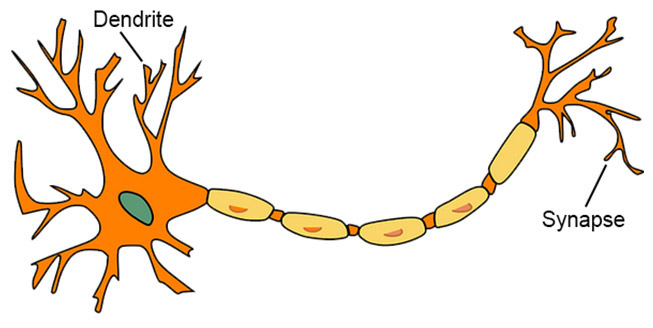
Repetition:
- creates awareness of the target item
- creates the memory: locks in the target item by generating rapid synaptic responses and thereby strengthening the neural pathways
- creates two automatic responses … the brain hardwires the item; an automatic motor response develops … the hand can record the item with little, or no, conscious mental effort
Why is overlearning so important?
Overlearning reduces the cognitive load. It reduces the volume of problem solving, as fewer low order elements need to be recalled, or remembered. The more automatic skills and knowledge become, the more working memory remains available for other complex problems needing to be navigated.
How are students selected? What do they write?
Be guided by observations and data. If looking at letter formation with foundation year students, it is helpful to watch students write their names early in the year. Are letters formed quickly and accurately? If they are formed accurately … use the circuit to overlearn the letter formation. If a letter is incorrectly formed, reteach the letter and use the circuit to hardwire.
Data can also be gathered by observing students as they write. Take note of students recording words accurately, but slowly … it appears they need to think about, or remember how to record the word. Use the circuit to make the word automatic, speed up the recording time and alleviate the cognitive load.
The most valuable place to capture data is in students’ workbooks. Are there any words you must address urgently? For example, you may see ‘thay’ used consistently for ‘they’. This is urgent. If you don’t act, the incorrect word could be hardwired as ‘thay’. In some cases, the word may already be overlearned … this word requires prompt action and reteaching. The circuit can then be used to hardwire. For errors already hardwired, the circuit may require a cognitive strategy, or mental reminder, to check that word. The student may need to prompt themselves to self-monitor until the correctly spelled word becomes known and fluent. Repeated practice at the circuit may be needed for these words.
Likewise, some students find it more difficult to retain and retrieve specific words over time. Again, some words may be targeted more than once.
In short, target elements which should be recorded with little or no mental effort are the focus elements for overlearning. Students should have automaticity of all letters, accurately formed. They should have automaticity of a large bank of high frequency words and a growing number of other common words … words they can write accurately, and without thinking.
Forming a suitable group: An example,
Target element: ‘they’.
You have noticed some students in your target group can write the word, ‘they’, but they are not quick. They are thinking about, or recalling how to spell the word. Two others make errors on the word. One student records ‘thay’ and another records ‘thy’. The word, ‘they’, is a suitable choice for overlearning, as students control it or almost control this word. The word would be unsuitable for a student unable to recall a reasonable proportion of the word.
All these students know enough about the word to overlearn it. The circuit can now be used to hardwire this word and create a lasting memory, making the item permanently and automatically known.
It is possible to have students in a group, each with a different high frequency word. Just have them focus on their own word as they progress the circuit.
What is needed for the circuit?
You need enough stations for your group. For example, for a group of six students, you need six stations. Stations should include a variety of writing implements which change the physical sensation each time the student writes. Choose implements which are quick to record with and fast to erase or clear. Avoid paint, shaving cream, dough, or anything else that will slow movement around the circuit.
Some examples:
- Sand tray
- Whiteboard
- Blackboard
- Magna doodle
- Jumbo pencil
- Weighted pen
- Chalk
- Corrugated paper
- Mouse mat
- Antislip mat
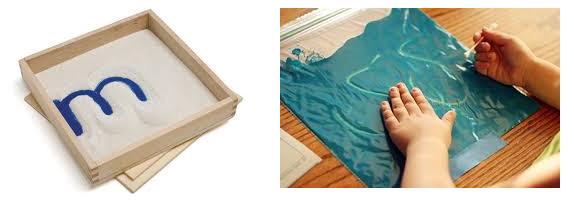
Set your stations up. They need to be far enough apart that students do not bump each other. If you can set them up in a circular shape that is great, as it is easy for students to know where to go next. If you set up in a line, just teach students where to go when they reach the end. There is no rule. Just set up to suit your physical space.
I usually set up with some stations on desks, the floor, on a wall or filing cabinet. Try to organise stations to create a circuit with high, low, horizontal and vertical stations. This is even better for promoting transference.
If any stations require scrap paper to record on, you need to provide a bin or bucket for rubbish, as students must clear their station before moving to the next.
The Procedure:
- Invite students to the station area and have them stand around a table. Have the word written for each student (I often use a sticky note for each student). The target letter/word is recorded on the sticky note. Introduce the target element.
- Have students say the word as they look through the word and slide their finger beneath the word.
- Have students trace the word with their finger as they say the word aloud. Repeat.
- Have students write over the word quickly with a marker as they say the word aloud. Repeat once/twice/three times as needed.
- Have students look through the word carefully and then turn over the paper and record the word on the back. Check it.
- Note: Students must record accurately when moving around the circuit. You may need to stay close to a student if you suspect a gentle reminder may be needed.
- Place papers in a rubbish tub and have students quickly move to a station. Stand where where you can see all stations easily at once.
- Say ‘Go!’ Students write the word as they say the word. Watch for accuracy as students write.
- Say ‘Clear!’ Students move to the next station and write the word as they say the word. Watch for accuracy as students write.
- Say ‘Clear!’. Students erase the word and move on. Watch for accuracy as students write.
- Continue for one to two minutes. Groups of six will get around the circuit multiple times.
- Tell students this is their ‘word of the day’. Each time they leave the room, they are to write the word on the board. Remind them to write it, look at it and say it. Each time they come into the room, they are to write the word on the board. If I place a sticky note on their desk, they are to write the word as they say it and look at it. If I place my hand in front of a student, they write the word on my hand with their finger as they say it. When they arrive at school the next morning, they are to write the word on the board. Be rigorous, particularly if you are relearning a letter, or sight word that students have previously recorded incorrectly.
The following video demonstrates a short example of the Mastery Circuit in action.
Notes
- Repeated sessions may be required for some elements, particularly those that students have been incorrectly recording and are already hardwired. Repeated sessions may also be needed for elements that look like other elements … e.g. uppercase ‘R’ and lowercase ‘k’, which are often recorded similarly by students.
- If letters are confused, e.g. b/d, separate the letters. Overlearn one. Continue to practice. Learn dissimilar letters while continuing to practice the first confusion. Once you are sure the first confusion is controlled, learn the second, but do not bring the confused letters together yet. Continue to overlearn the second. Only bring the two confused letters together when you are sure each is controlled independently.
- On the very first lesson, you should walk through the stations, talking aloud what you are doing at each one. Follow this with a demonstration of doing it quicker. Then walk students through the stations once and then have them try it quicker. Ensure students know where to stand after they have recorded … Students should not stand between you and the station. It is imperative you can easily check for accuracy.
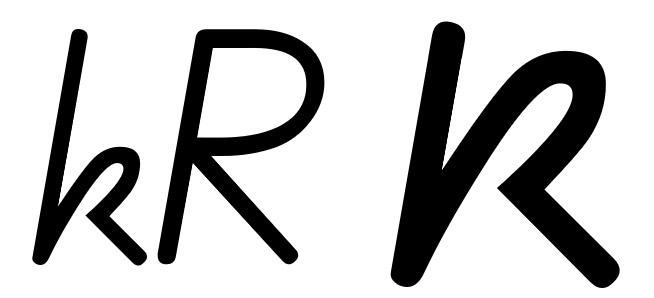
Complex Idea; Simple Execution
The Mastery Circuit may seem like a simple idea, but many factors have been considered to create specific conditions for learning, align neuroscience with learning style, multisensory learning, content selection and a simple, classroom friendly, success-based activity.
Footnote
1 Researchers continue to investigate reasons for, and solutions to, short and longer-term memory retention issues. Neuroscientists currently believe these issues may be attributed to genetics, but research is ongoing. What we can do is interrogate and use valid research findings to date and integrate research across disciplines. Brooks, Flanagan, Henkhuzens & Hutchison (1999:51) remind us that the variance in research quality and validity ranges from ‘the meticulous to the appalling’. It is, therefore, important to be mindful particularly when reading research associated with commercially produced programs which may be conducted by, or on behalf of, creators or publishers of the product. Valid research should engage independent field researchers, meet ethical standards, be published in a reputable industry journal and open to interrogation within the industry.
References
Allington, R. (2001). What Really Matters for Struggling Readers. Pearson. Boston
Bains, L. (2008). A Teacher’s Guide to Multisensory Learning: Improving Literacy by Engaging the Senses. Association for Supervision and Curriculum Development. Alexandria
Baron, J. and Strawson, C. (1976). Use of orthographic and word-specific knowledge in reading words aloud. Journal of Experimental Psychology: Human Perception and Performance, 2, 386-393
Berninger, V.W., Richards, T.L. (2002). Brain Literacy for Educators and Psychologists. Academic Press. New York
Bickart, T.S., Dodge, D.T. (2000). Reading Right from the Start: What Parents Can Do in the First Five Years. Teaching Strategies
Brooks, G., Flanagan, N., Henkhuzens, Z., Hutchinson, D. (1999). What Works for Slow Readers? Berkshire, NFER
Clay, M. M. (1993). Reading Recovery: A Guidebook for Teachers in Training. Pearson Education Canada
Clay, M.M. (1991). Becoming Literate: The Construction of Inner Control. Heinemann.
Eliot, L. (1999). What’s Going On In There? Bantam Books. New York
Ericsson, K. A., Patel, V. L., & Kintsch, W. (2000). How experts adaptations to representative task demands account for the expertise effect in memory recall: Comment on Vicente & Wang (1998). Psychological Review, 107, 578–592.
Foorman, B. R., & Torgesen, J. (2001). Critical elements of classroom and small-group instruction promote reading success in all children. Learning Disabilities Research and Practice, 16(4), 203-212
Jensen, E. (1998). Teaching with the Brain in Mind 2nd Edn. Association for Supervision and Curriculum Development. Alexandria
Jensen, E. (2007). Brain-Compatible Learning. Corwin Press. California
Hopson, J., Diamond, M. (1998). Magic Trees of the Mind: How to Nuture Your Child’s Intelligence, Creativity and healthy Emotions from Birth Through Adolescence. Penguin. London
Reynolds, W.M.; Miller G.J. (2003). Handbook of Psychology, Educational Psychology. Wiley & Sons, Inc., New Jersey
Shams, L., Seitz, A.R. (2008). Benefits of Multisensory Learning. Trends in Cognitive Sciences. Vol 12 (11), pp411-417
Sperry, R.W. (1982). Some effects of disconnecting the cerebral hemispheres. Science, 217, 1223-1226
Stanovich, K.E.; Siegel, L.S. and Gottardo, A. (1997). Converging evidence for phonological and surface subtypes of reading disability. Journal of Educational Psychology, 89, 114-127
Strickland, D.S. (2002). The importance of effective early intervention, in A. E. Farstrup & S. J. Samuels (Eds.), What research has to say about reading instruction (pp. 69-86). Newark, DE: International Reading Association; Texas Education Agency. (2000).
Wolf P., Nevills, P. (2004). Building the Reading Brain: K-3. Corwin Press. California
Tags: Hardwiring, Mastery Circuit, overlearning


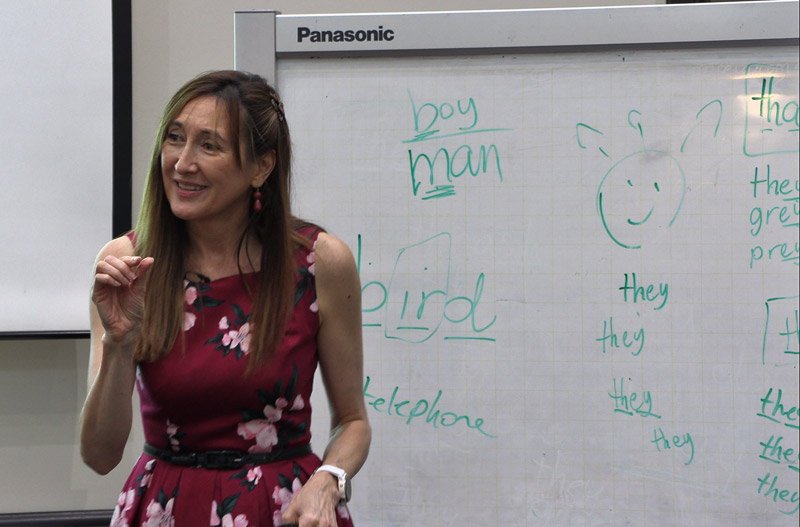
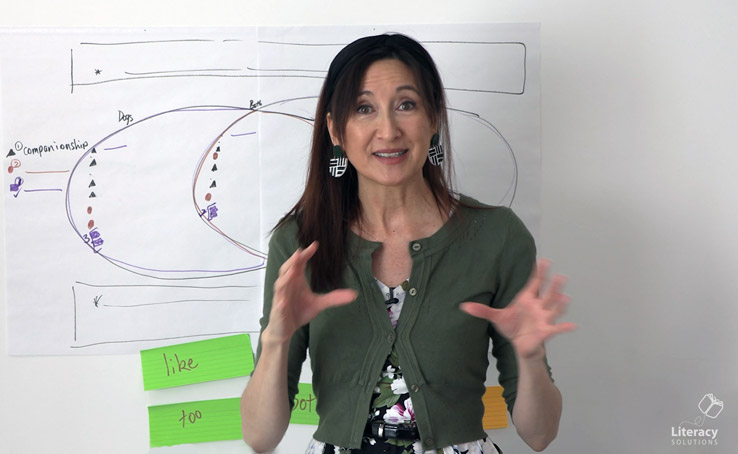
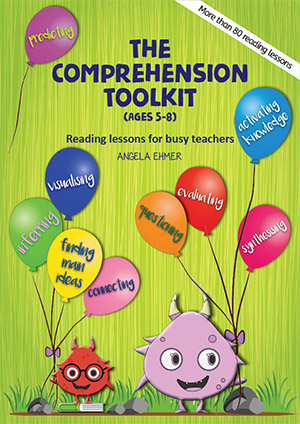
Thanks Angela
It’s great to be reminded of this important strategy and it’s timely as we begin to plan for 2018.
I enjoy your blog.
Anne
I was so glad that I opened this email today.
I had forgotten how great this activity can be.
Will definitely reintroduce it this week before school is finished for the year.
Thanks so much,
Tania
As I was reading, I wondered about children who may not have common target word. Would it be beneficial to carry their target word on a post-it note as they move around the stations?
Thank you for sharing your ideas. I’ll be sharing these with my colleagues.
Doreen
Hi Doreen
Students should practice the target element with you observing and supporting as needed. They only move to the circuit once you believe they are able to record the element unassisted.
It’s very important to select an element the student can already solve, and that you wish to speed up and make automatic; or, an element the student largely controls. For example, ‘teh’ is well enough controlled to learn ‘the’. However, ‘the’ would not be suitable if the student were still asking how to write the word.
Having the word on a sticky note may encourage the student to look at the word each time he writes it. If the student repeatedly copies what he sees, he is recognising, but not engaging the more complex cognitive processes needed to recall and encode without support.
You could certainly highlight the target word on a sticky note and have the student trace it, write over it, cover it and imagine it, in the days leading up to the circuit. It’s a great strategy to use … Recognition precedes recall, so working on the recognition aspect will support the retrieval and encoding process when you take the element to the circuit.
Hope you have fun with it.
Angela
Such a simple, effective way to correct those annoying errors like ‘thay’. I can also relate to the lower case K dilemma.
I’m sure if I gave it a few minutes, I could identify a few other common spelling errors and handwriting issues in my class. I’m looking forward to trying this strategy with my class.
Have you taken a look at the Easy Street to Handwriting program? it supports a lot of things you and research are saying.